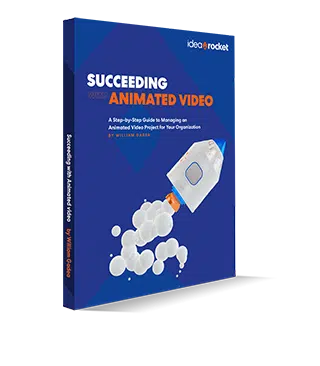When I used to teach 3D animation, sometime during the course I always included a screening of Oktapodi, an Oscar-nominated short from France’s elite animation school, Gobelins. I would usually show the film once, then replay it with a running commentary pointing out things that the students might not notice. For the Pick of this Week, I’d like to provide some notes for just the first thirty seconds of this masterpiece short. Here it is:
When you see something really well-made, it’s hard to imagine it any other way, so I always asked my students to imagine the way a hack might tell this story visually. Or not even a hack, just someone competent but not terribly inspired. It would probably go something like this:
Establishing Shot: We establish the locale, a fish shop in Greece.
Long shot: The octopuses in their embrace, in the aquarium.
Medium shot: The fish-monger squints at a paper order. He turns. Cut on the action, to:
Long shot: Octopuses in the aquarium, in the foreground. The fish-monger in the background approaches the aquarium and plucks one of the octopuses from the aquarium.
Reaction shot: The left-over octopus looks anguished.
Pan shot: The fish-monger puts the plucked octopus in a cooler, and carries her off. We pan with him and see that he is heading for the truck.
Long shot: The Octopus jumps out of the aquarium and heads toward the truck.
Well, you get the idea. Instead, we get something much more delightful:
- We open with the illusion that the lovers might be in the sea somewhere. There are no edges to the aquarium. A bright yellow hand plucks one of them out.
- It is only when the octopus hits the glass that we sense he is in an aquarium.
- We see the weighing and placement of the female octopus in the cooler, then the cooler is taken away and the anguished octopus is revealed in the background. By this time we have a better (but still incomplete) sense of the space.
- In a point-of-view shot, distorted by water waves, we see the fish-monger get into this truck and zoom in on the sign on the side.
- The sign animates into a premonition of what will come, in a totally different animation technique.
- We see a reaction close-up from the octopus.
- The driver tries to start his truck.
- We see the aquarium is empty. The octopus has jumped out, and we now follow the trail of water he has left behind.
- For suspense, we cross-cut between the truck getting started, and the octopus straining to get there in time.
- The truck turns on its way out, and it is revealed that the octopus reached the truck – just barely.
- We crane up and reveal the town, which will be a player in the narrative ahead.
Masterly story-telling is often about what you don’t say, what you hold back. This makes the viewer active – we might say to ourselves: “What! The octopus isn’t in the aquarium any more? Where is he then?” Oktapodi is a great example of stringing along the revelations artfully.
As happens in Gobelins films, the film was co-directed by six students. Here is just some of what they have done in the last 8 years since the release of this film:
- Julien Bocabeille: Animator at Dreamworks.
- François-Xavier Chanioux: Designer, A Monster in Paris.
- Olivier Delabarre: Designer, Despicable Me.
- Thierry Marchand: Director, Angelo Rules.
- Quentin Marmier: Visual Effects, Star Wars: The Force Awakens.
- Emud Mokhberi: Visual Effects, G-Force.




